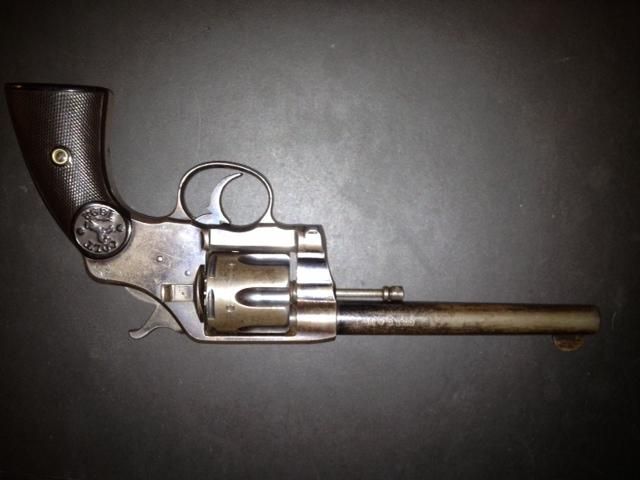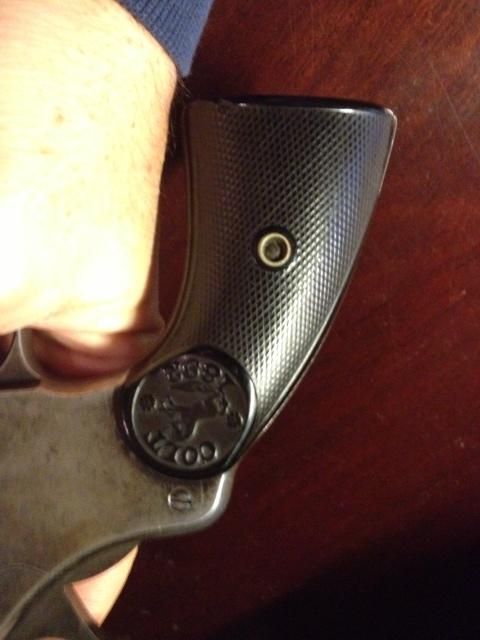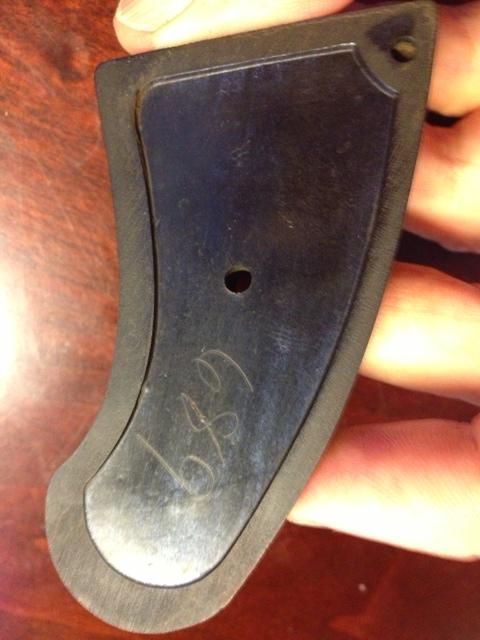spacecoast
New member
I recently acquired this 1892 Colt (New Army, commercial version I believe, in .38 Colt) with a serial number of 14xxx, putting its manufacture date in the 1894 timeframe. There are no military markings, hence my assumption it's a commercial version. The finish is only fair, the action is loose and the timing is way off, so I won't be shooting it, but I am curious about the hard rubber grips. I assumed they were aftermarket replacements, but checking a few other sites I see that they may have come from the factory that way - with the "1892" under the Rampant Colt. The other clue they may be original is that they have the same 3-digit assembly number scratched on their undersides that is under the crane and on the cylinder latch.
Does anyone have more specific knowledge of these grips or gun who can fill me in? Unfortunately the right grip has a small chip near the bottom that isn't visible in the pics.
By the way, I recently discovered Colt's serial number lookup page - very useful - not sure how long it's been out there.
http://www.coltsmfg.com/CustomerServices/SerialNumberLookup.aspx


Does anyone have more specific knowledge of these grips or gun who can fill me in? Unfortunately the right grip has a small chip near the bottom that isn't visible in the pics.
By the way, I recently discovered Colt's serial number lookup page - very useful - not sure how long it's been out there.
http://www.coltsmfg.com/CustomerServices/SerialNumberLookup.aspx



